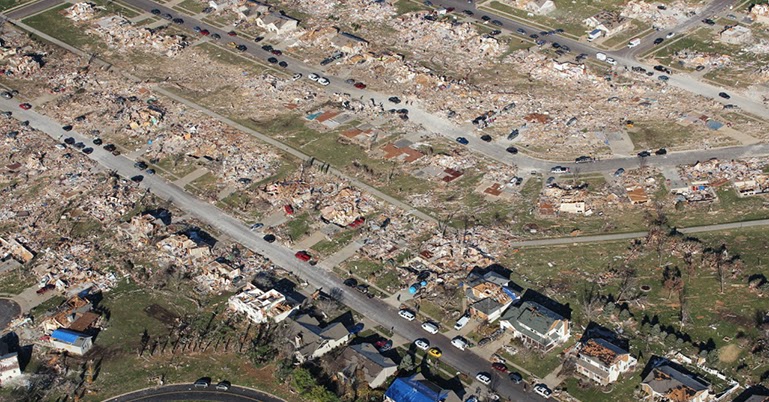Chicago's Digital News Needs
by Andres Torres, Program Officer, Democracy
In Chicago, we have the benefit of dozens of outlets at our fingertips. According to a recent analysis by News Revenue Hub and Impact Architects, there are almost 100 digital news outlets in the Chicago region. This estimate doesn’t include the many broadcast and print-first publications that continue to serve the region. In an era of precipitous decline in the number of newsrooms across the country, confirming the continued presence of so many outlets in this 2019 “news census” is significant.
Continuing Challenges
Though well-populated, our news landscape is not a healthy one. A survey of several of the digital outlets reveals how endangered this ecosystem is. Helpfully, the survey pin-points some primary obstacles that, if addressed, could improve sustainability and help fill some of the growing information gaps in our region. Below are two of the challenges and related opportunities to support reader revenue and infrastructure modernization that caught my attention, but you can also read the full report for yourself.
Capitalizing on Reader Revenue
There's still money in advertising
There’s always money in the banana stand, George Bluth Sr. counseled his son, Michael, in Arrested Development. Perhaps there will also always be money in advertising? Of the 23 media companies that responded to our survey, 60% said print advertising makes up more than half of their revenue. It helps that most of the digital properties surveyed also had print publications, for which the value of an ad remains higher than on digital properties.
I’ve been assured by several local print publishers who also maintain active websites that there is still enough advertising revenue to assure a future for printed products and subsidize digital news. And there are some in academia who agree with this prognosis: Prof. Iris Chyi of the University of Texas characterizes newspapers’ embrace of digital as a struggle towards inferiority. She and others have found that most news companies reported considerable advertising revenue over the last decade and continue to do so, in most cases eclipsing their reader revenue.
Reader revenue is underdeveloped
Let me be clear. I think news outlets need all the revenue they can get and if advertising remains a revenue stream, that’s great. I also believe there is no denying that reader revenue is an untapped resource that needs to be mined. The outlets we surveyed agreed.
In fact, 43% of outlets surveyed were experimenting with some type of membership program, 65% received some type of donations, and 70% offered subscriptions. However, for almost all the outlets surveyed, these reader revenue streams are dwarfed by advertising.
The challenge to increasing reader revenue does not appear to be a lack of familiarity with the concept or a belief in its value. Instead, the survey suggests that reader revenue is underdeveloped because of limited technical and financial capacity to change systems built to support a different media business model.
Missing and misaligned support for reader revenue
Local media companies need capital and technical assistance to create capacity and develop the skills to tap reader revenue. As one publisher wrote, “to assemble a team to test [audience revenue growth strategies] and provide sufficient runway for the test to play out would require a capital infusion that seems very difficult to justify, given the level of risk involved.”
Another publisher recognized that with “declining ad revenues in print and small revenue from digital, but with a considerable and loyal audience with critical information needs, it is important to diversify our revenue options and to update our model.” However, the publisher was unsure how to develop an audience growth strategy and capitalize on readers, especially with an existing revenue team focused on selling advertisements.
The survey revealed strong interest in developing a new business model, but it was often accompanied by frustration with a lack of financial resources and expert support to do precisely that.
Modernizing News Systems
“Can Local News Websites Shift From Annoying Their Readers to Serving Them?” asked Jeannette Hinkle on Medill’s Local News Initiative Blog in March. The article underscores the connection between digital infrastructure, user experience, and, ultimately, reader revenue (the subtitle is pretty clear: “Getting Readers to Pay Will Require More Attention to User Experience”). The article highlights a particular piece of digital machinery as the crux of many issues: the content management system (CMS). Our survey found the same to be true.
As the report author points out, several local media organizations use a CMS that can’t keep up with the needs of a modern digital newsroom. Their customer relationship management (CRM) systems are similarly outdated, with some newsrooms keeping reader data in Excel spreadsheets, as opposed to a database like Salesforce, which limits the newsroom’s ability to design targeted engagement strategies to segment readers and provide customized messaging to meet their interests or convert readers into revenue supporters.
Without a modern, reader-centered digital infrastructure, local newsrooms will continue to be limited in their ability to evolve to provide the information their audiences need and raise the funds to support their journalism.
Next Steps
The McCormick Foundation commissioned this survey to inform our work in journalism. We wanted to understand how well positioned local newsrooms are structurally to provide high-quality civic information across the Chicago region.
We learned that a considerable of number of newsrooms have made the transition to digital and several compelling digital natives have joined the landscape. These include for profit and non-profit, English and non-English, urban and suburban publications.
We also learned that a real opportunity exists to build the capacity of these newsrooms. As newsrooms around the region struggle to secure resources to meet their communities’ information needs, there is a high risk of growing geographic, thematic, and demographic gaps in coverage.
Already, this survey is showing clear gaps on Chicago’s West Side and across the suburban areas of the region. We are particularly sensitive to the risk these modernization challenges present to media serving communities of color and communities preferring news in a language other than English. Recent studies from the Craig Newmark School of Journalism at CUNY on the State of the Latino News Media and from Democracy Fund on American Indian Media, African American Media, and Hispanic Media have documented the particular challenges ethnic media face.
Alongside other research, this recent report by News Revenue Hub on Chicago’s digital news landscape provides helpful priorities, particularly on funding infrastructure modernization and building communities of practice, that are actionable for philanthropy.
The Analysts
News Revenue Hub, with its partners at Impact Architects, worked with us this Spring to survey digital outlets in the region and recommend opportunities for investments. We commissioned the Hub to lead this study because, as a fundraiser that helps outlets across the country tap into reader revenue, they know a thing or two about what to look for when assessing an outlet’s long-term prospects for sustainability.
We are thrilled the Hub brought in Impact Architects. The firm has done extensive work at the intersection of media and philanthropy to understand the state of journalism, how its evolving, and the wisdom of the paths it’s taking. (I am an avid follower of their work and recommend some of their past articles and reports.)






Comments
Post a Comment